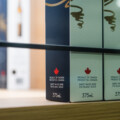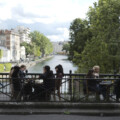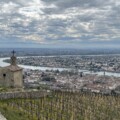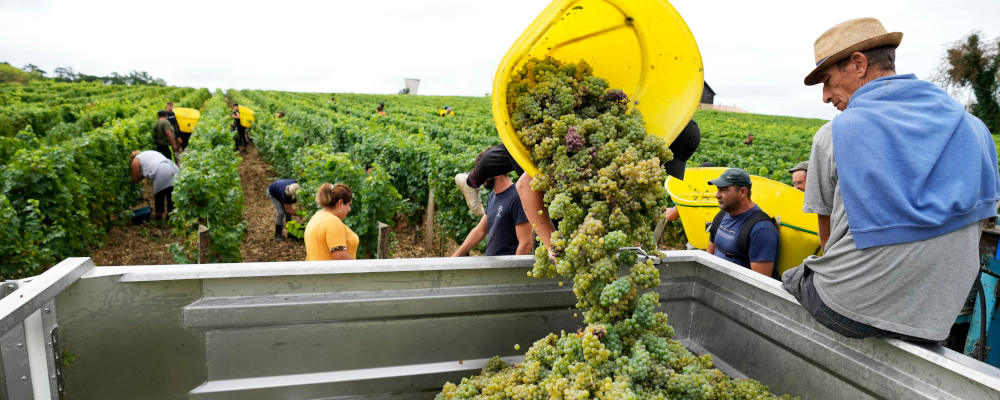Walter Speller is the Italian wine correspondent for jancisrobinson.com and wrote a poignant eulogy for Luciano Sandrone, the Barolo winemaker who died on January 5th. Speller’s piece is mostly personal and is written in gratitude for the hospitality and generosity Sandrone and his family extended to the writer when he was an unknown young man.
Speller’s piece is also a professional obituary in the sense that he identifies Sandrone’s accomplishments, not just as the maker of renowned and sought-after wines but as a winemaker whose work made a difference to the way wine is made in the Langhe, the part of Piedmont surrounding the town of Alba that includes the famous Barolo and Barbaresco appellations.
Speller identifies Sandrone as “the link between what was once dubbed the modernists and the traditionalists, the former firmly in favour of modern technology and short maceration times and new oak, the latter continuing age-old methods of prolonged maceration and ageing in large oak casks.”
The conflict that raged between the Langhe modernists and traditionalists, largely in the 1990s, is the subject of the 2014 documentary Barolo Boys: The Story of a Revolution. The split has since largely subsided into a consensus due to the leadership of producers like Sandrone as elements were borrowed from both camps.
Speller also points out that Luciano Sandrone was the cellarmaster at the established and historically significant Marchesi di Barolo. Before he built up his own label to the top levels of Italian wine, he had acquired technique and expertise. And he made all the difference by applying it.
The Langhe is the birthplace of the Slow Food movement, adherents to which can sometimes get caught up in a kind of post-industrial reverie when it comes to wine. Natural wine and “non-interventionist” wine are terms of art, rather than science, which generally mean wines made with as few additives as possible, if any at all.
As interest in natural, organic, biodynamic, and non-interventionist wines grows and solidifies, it is tempting to believe that wine makes itself, that the job of the winemaker is to simply get out of the way. But wine does not make itself, and the story of Luciano Sandrone is just one of so many about the importance of the people who do the work to make it.
Nicolas Joly is considered to be a pioneer in the bio-dynamic and natural wine scene. He described himself as a “minimal-intervention” winemaker when I visited the Coullée de Serrant vineyards in the Loire Valley a few years ago. And yet still, Joly is happy to use new technology, and study old. Joly and his family make the wines, and for all the attention that gets paid to terroir, it’s the people that are of primary importance.
Back in the Langhe, the Barbaresco winemaker Marina Marcarino inherited the Punset winery as a young woman when her father died. When she decided to stop spraying her vines with chemicals and go organic, she was known as the “crazy lady of Neive”—until more and more of her neighbours began to come to her for advice.
Marcarino is now recognized as a pioneer and leader in the region, and she is an impassioned proponent of ultra-organic bio-dynamic viticulture. Still, she drew a big laugh at a tasting she led a few years ago in Toronto. When asked about the extent of her commitment to non-interventionist winemaking, she said, “I do my best, but I am not the Taliban.”
Phillipe Cambie was a renowned winemaker and consultant who died at just age 59 in December of 2021. Cambie is considered a key figure in the modernization and repetitional rehabilitation of the wines of Châteauneuf-du-Pape and the Southern Rhône Valley.
The Liquor Control Board of Ontario is currently selling its allotment of the 2020 Halos de Jupiter Côtes-du-Rhone, the label Cambie created in collaboration with Michel Gassier from Château de Nages. Gassier is a force to be reckoned in and of himself and is credited with elevating the reputation of neighbouring Costières de Nîmes.
The top-tier wines of the Halos de Jupiter series are not cheap, but Cambie and Gassier’s Côtes-du-Rhone, which is driven by juicy, black-fruited Grenache, is a fantastic value for $20. I have stocked up before it runs out. 2020 would have been the last vintage Cambie saw bottled.
I never met Luciano Sandrone, though I have met, interviewed, and enjoyed the company of his daughter Barbara several times. Over nearly 20 years of covering the wine scene, I have met many of the people who make the wines I love and respect. Walking through the aisles of the liquor store, reading through a wine list, or browsing through an importer’s website I am reminded of those meetings.

A natural reaction to the industrialization of wine was a focus on “terroir”, the “taste of place”, which emphasized the importance of the geography of where a wine came from. This was not a new idea. Wines have always been described by the name of the place of their origin.
The concept of terroir has also always been a favourite marketing strategy since it can’t be replicated. The Bordelais understood this when they came up with their classification hierarchy in 1855. Wine marketing communication seeks to promote the connection the wine makes between its consumer and the place.
The consortia that are established to protect the reputation of the wines from a recognized region will often have a strict “discipline”; tight rules about how a wine with a geographic designation can be grown and made. The idea is that wines that come from a specific place, like Barolo or Châteauneuf-du-Pape, should share some kind of typicity. This way a consumer may be assured a minimum level of quality and have a general expectation of what the wine will taste like simply by reading the label. At least in theory.
Low-intervention wines, the understanding and promotion of terroir, and the appellation system that governs how wines are made are all fine ideas and have their place in a healthy wine ecosystem. But like any good thing, too much of it can be had. Let’s not forget that wine is made by people and is the product of their work and the choices they make while doing it.
The real connection made possible by a glass of wine is human. I will remember that and Monsieur Cambie when pouring myself one of his tonight at dinner.
Recommended for You

Matthew Grills: Joey Chestnut is America

Malcolm Jolley: The comfort of familiar favourites—or the fun of finding new wines?

Malcolm Jolley: An ‘Elbows Up’ wine project everyone can get behind

Malcolm Jolley: Need some summer wines? Look no further than the food-friendly, low-sugar sippers of the sunny Southern Rhône




